Eat your veggies like it were 1936
Linamnam's Don Baldosano is serving up roots, shoots, leaves, blooms, and fruits from pre-World War II seeds
By AA Patawaran
At A Glance
- I like it that I am trying to focus on rediscovering our forgotten local produce. It forces me to get creative with my dishes. —Don Baldosano
Young chef Don Baldosano, the genius and provocateur behind Linamnam, is at the moment laser-focused on whipping up dishes from produce no longer available from the yields of commercial farms.

The 24-year-old chef is collaborating with a farm in Calaca, Batangas that with him has been harvesting roots, shoots, leaves, blooms, and fruits from pre-war seeds, seeds preserved from the devastation of World War II and the subsequent commercialization of food production.
With much of the world flattened by the bombs of war, it was unacceptable that farmers then would take months to grow essential food sources, so imposed, particularly in the Philippines by the American commonwealth, was the policy to dedicate farmlands to crops that guaranteed more resistance to pests and diseases, higher yields, longer shelf life, and cheaper prices. Decades later, at the turn of the century, advances in technology gave way to bio-engineering and the rise of genetically-modified organisms (GMOs), which further made the food we now eat so different in size, shape, taste, texture, and nutrients compared to the food our ancestors produced and consumed.

Don’s new passion project is a return to our literal roots. He’s not alone in his campaign, as there have been seed libraries set up precisely as a record of the way we ate, but he isn’t relying on any seed libraries. Instead, he is taking the long way to discover how much of our agricultural wealth in the past has been preserved, going from farm to farm across the country in his spare time, aside from Den and Jean’s Natural Farm in Calaca, with which he has an established collaborative relationship and whose farmers also work with other farmers in discovering not only heirloom seeds preserved from the ravages of time but also the old ways of farming.
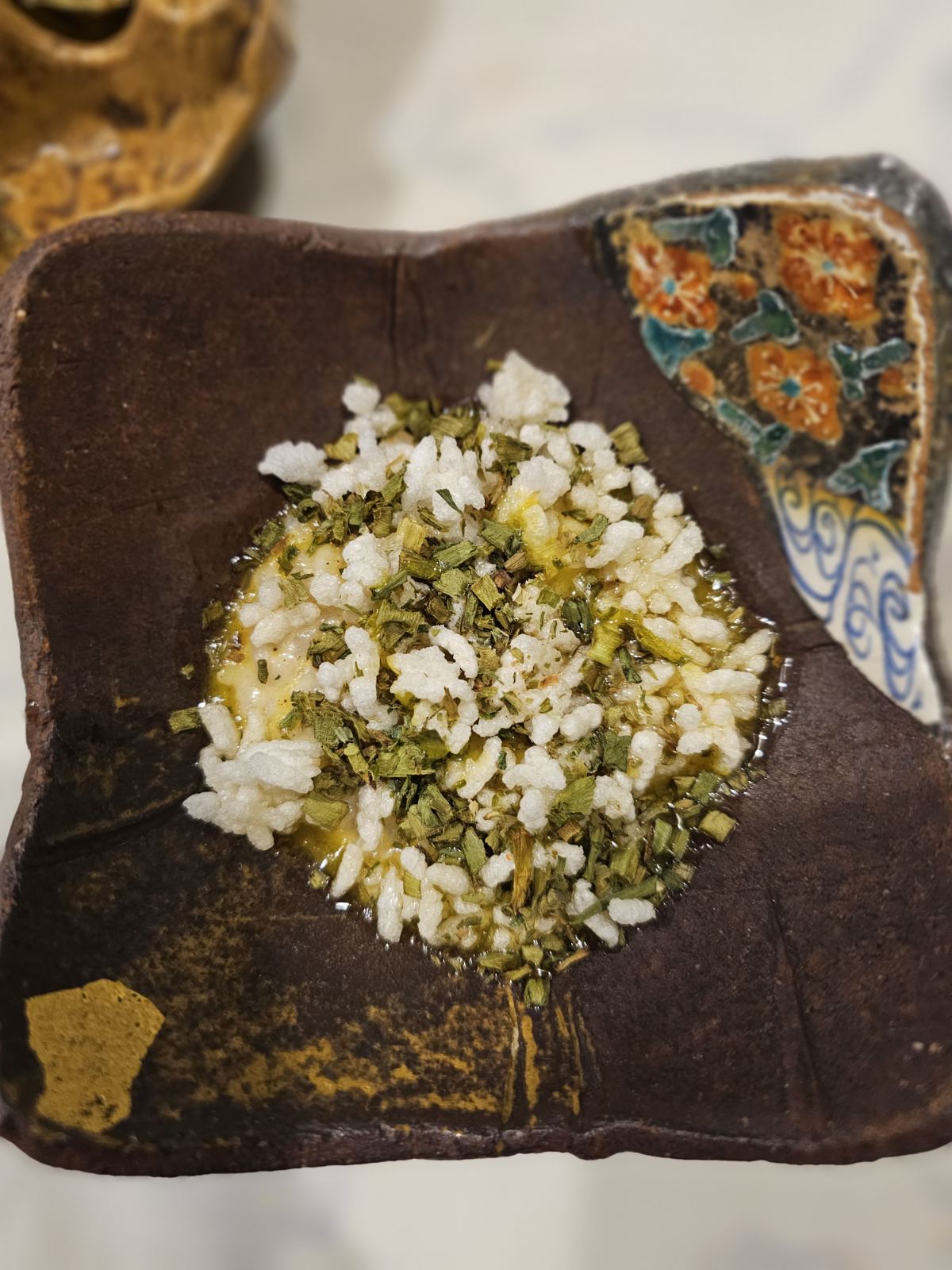
More labor-intensive than capital-intensive, free of GMOs, the use of fertilizers and pesticides, and the disadvantages of mass production, like the loss of biodiversity and soil erosion, which result from such modern farming techniques as monocropping and precision agriculture, theirs is a mini-movement, albeit in a scale more personal than organized, more passion-driven than business-minded.
More and more, Don is featuring these yields from the past on his menu at Linamnam, and I suppose this is the reason his dishes of late have become more enjoyable, chock full of nuances no longer present in mainstream dining.
On a recent visit of mine, Don served among the earlier courses a binakol-inspired shrimp mi-cuit or shrimp lightly cooked on one side. It was served with shaved ice made of buko juice reduced with dahong sili and ginger, finished off with coconut wine vinegar, and topped with crispy shrimphead.
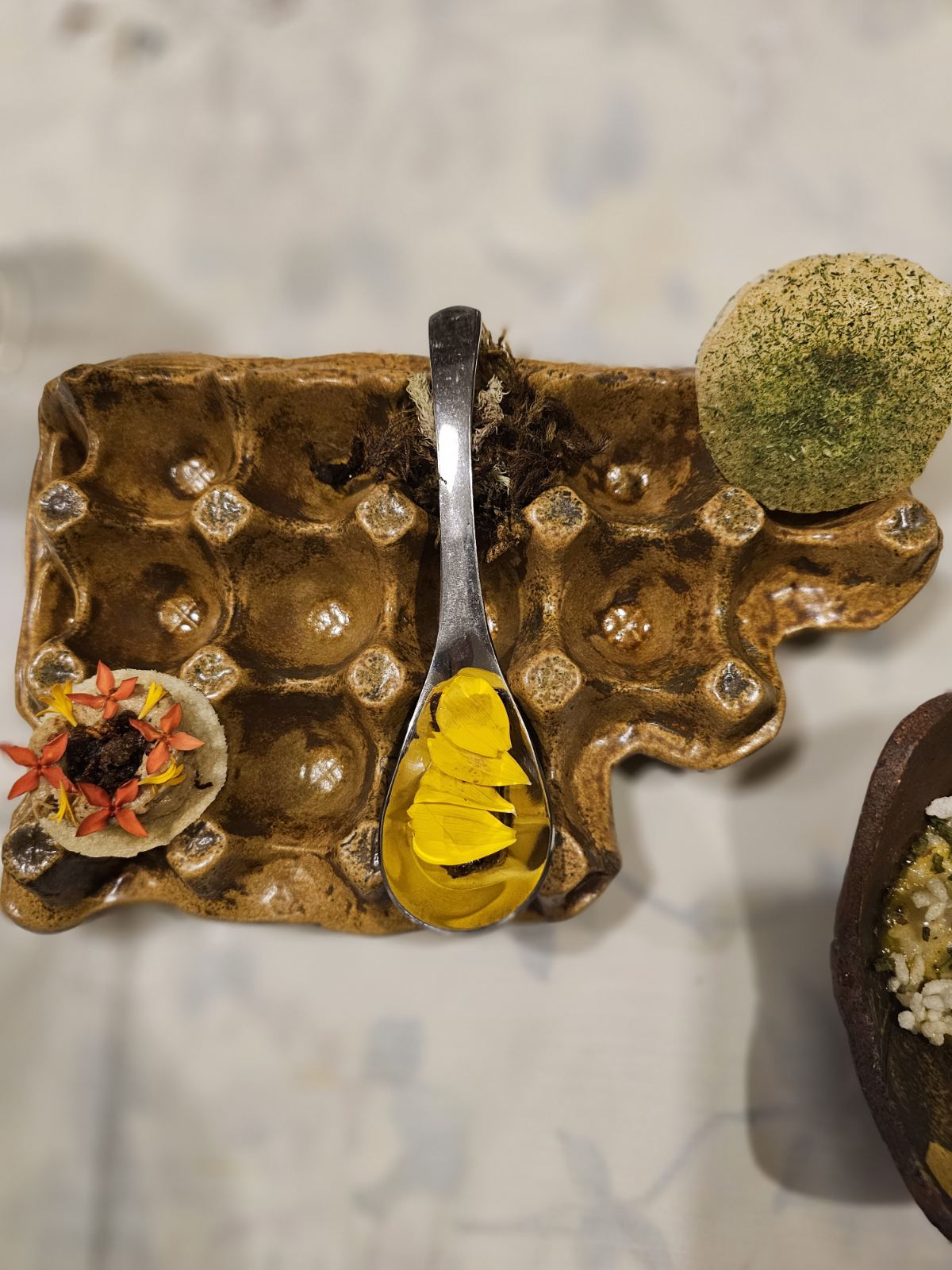
But he got us started with a dish evocative of a typical Filipino breakfast, longsilog—a crumble of Vigan longganisa on top of rice chip with cream of Calumpit longganisa and santan flowers. It was served with a spoonful of pompano belly tocino, a cracker made of chili demonio and kesong puti, and a lugaw of smoked clams, puffed rice, onions, and the yolks of just-harvested eggs.
Fish was among the highlights of the 11-course menu. Of late, apart from organic vegetables, Don has been equally interested in local fish and its many possibilities. “I’m exploring the bounty of our seas,” he says, citing the wealth that stems from a country as archipelagic as ours, endowed with seas, lakes, river, and streams, not to mention the Pacific Ocean.
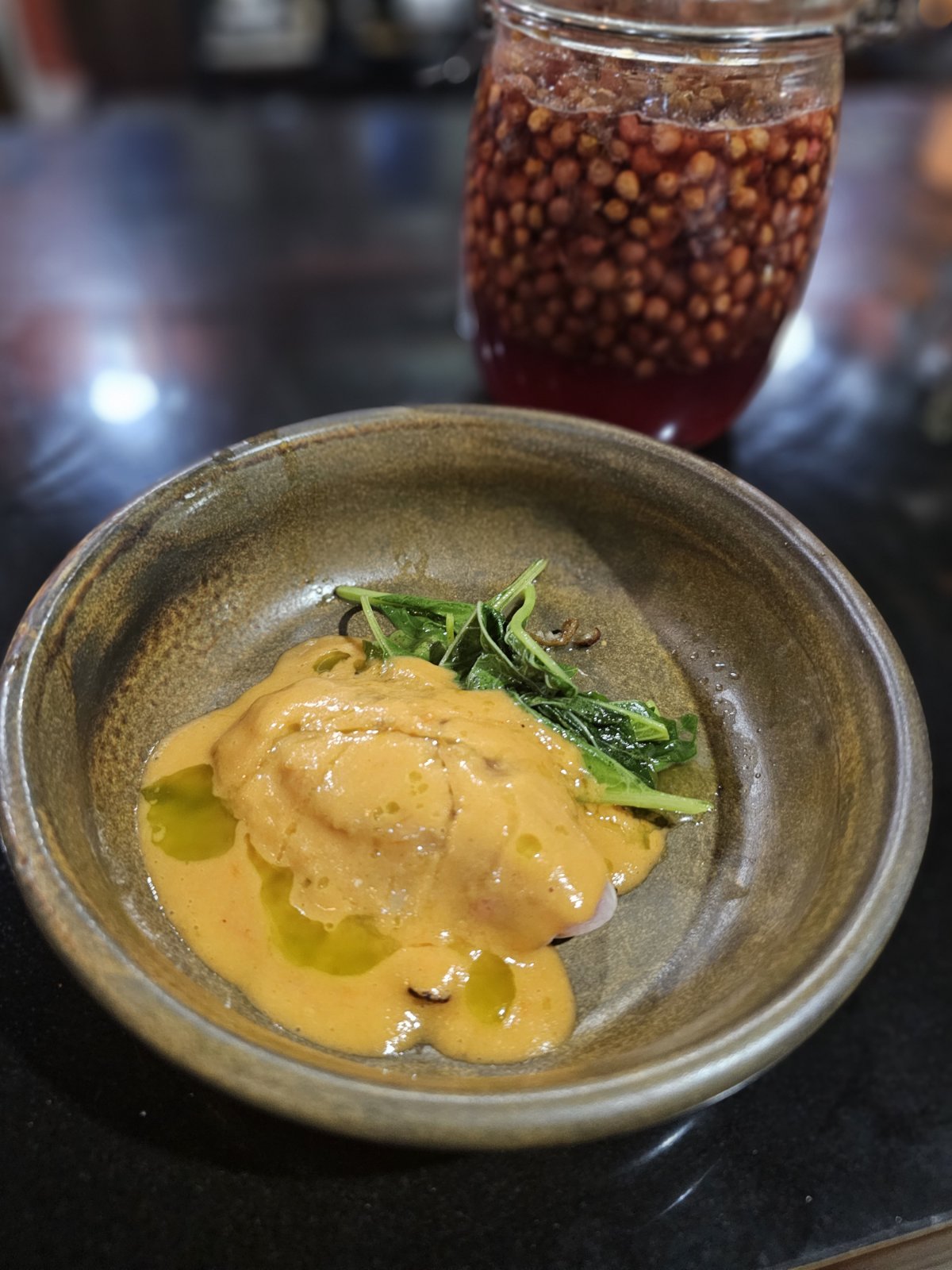
Salay salay or yellowstripe scad was prepared as a nod to the way fish would be eaten in Quezon province, often with a condiment of ginataang kamatis (tomatoes in coconut cream). Don enhanced the flavors with savory oil extracts from the stems and leaves of saluyot or jute, otherwise known as Egyptian spinach, and chili. Uray or native spinach from Batangas came along as a side dish.
Also on the menu was aged lapu lapu glazed with aligue ng talangka (“fat” from tiny crabs) with halaan made out of chilis, lemongrass, and burnt coconut as an ode to the Tausug specialty pamapa itum.
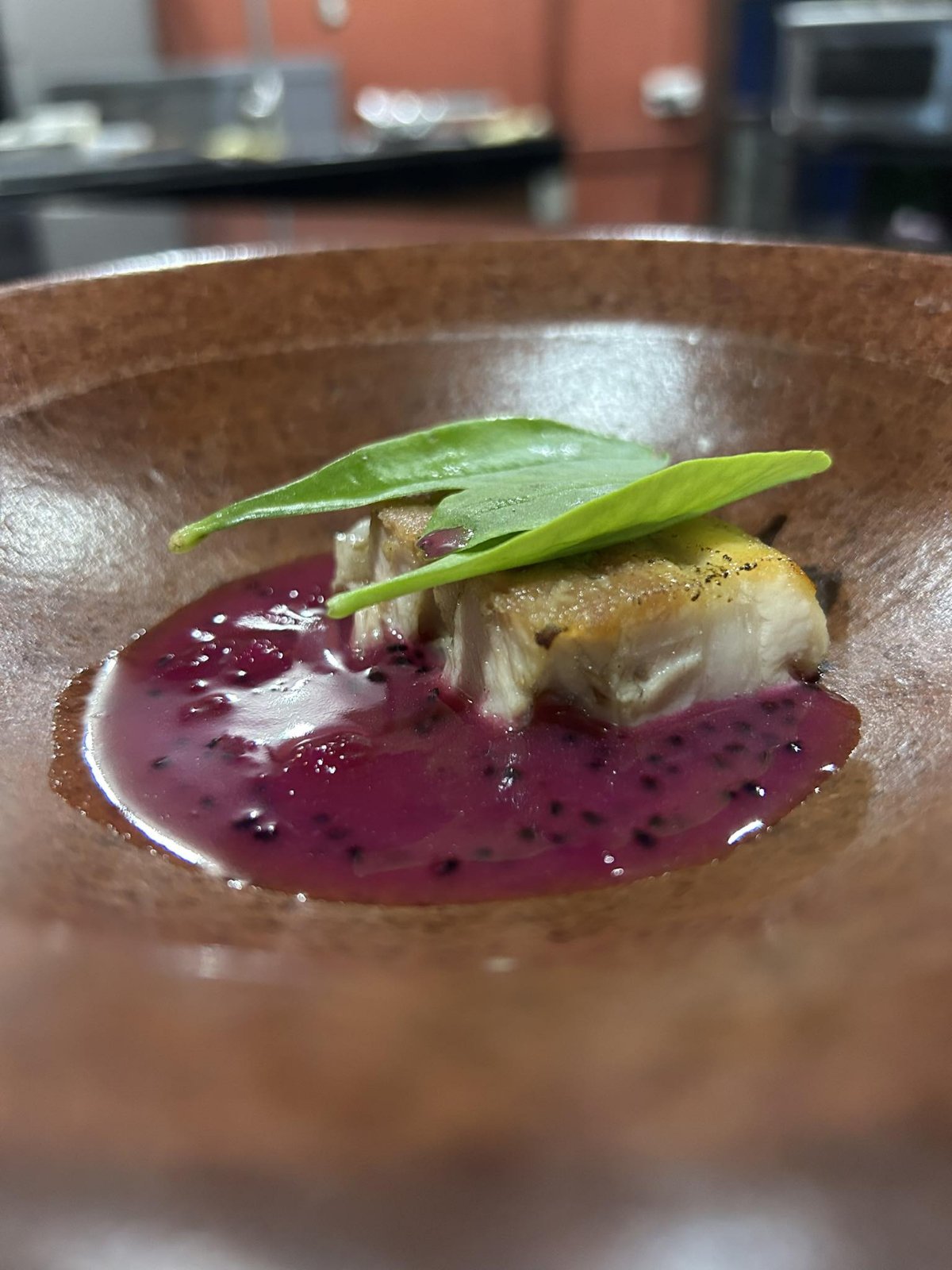
On top of the meat dish was talinum, a vegetable leaf from a plant once commonly known as flameflower, which grows wildly in the tropics, although it seems to have been forgotten over the decades in the Philippines, where it has been reduced to animal feed. The leaves, which has the taste and texture of okra but more delicate, came as a garnish to liempo, roasted for seven hours, seared like lechon kawali, and drenched in a sauce inspired by sawsawan with housemade vinegar, fermented dragonfruit, and butter.
On Linamnam’s current menu, aside from the everyday fruits, vegetables, and spices, such as the talinum, the tomatoes, the chili, and the uray, which were all grown like it were 1936, also heavily featured were the libas, the leaves of the fruit tree hog plum native to the Philippines, the aratiles, which I used to call mansanitas and eat right off the trees that would grow wildly and abundantly on the streets of my childhood in Quezon City, and the alagaw, commonly known as fragrant premna, which was once upon a time used as a source for folk medicine in the Philippines. “Back in the day, in Bulacan, they used it to cook and wrap food in,” says Don of alagaw leaves. “Now, we rarely see it and I think people have forgotten that it’s edible.”
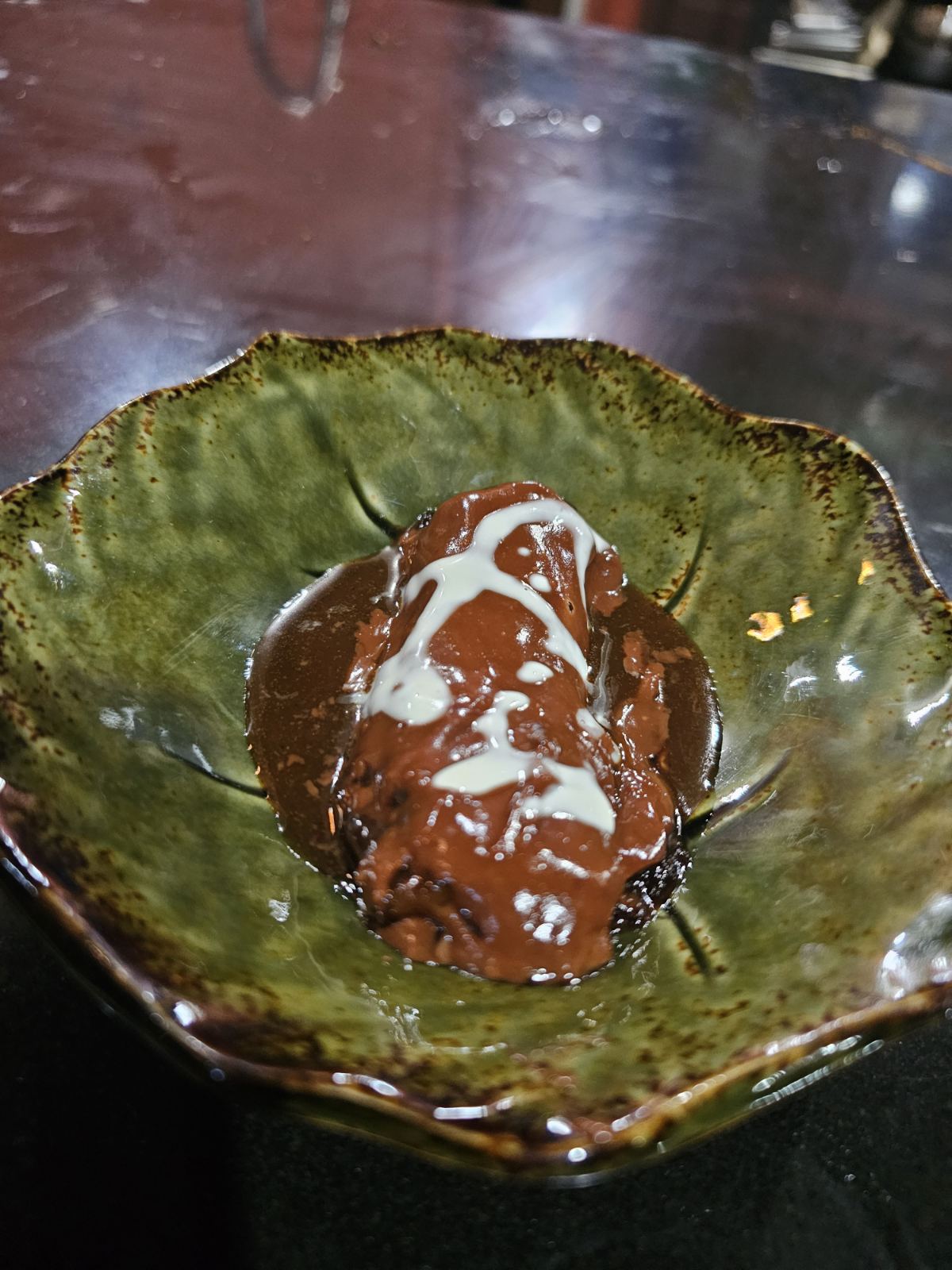
Rice crowns every menu presented at Linamnam, where it is usually served as a last course, as at Chinese banquets “to fill the empty corners of the stomach.” To Don, however, rice is given its pride of place in the sequence of courses in honor of its role as a staple, if not a mainstay, in the Filipino diet.
On his current menu, he served sunog na kanin in a coconut shell. The rice, grown organically in the Calaca farm, was cooked in burnt butter and burnt soy sauce with wild mushrooms and onions and served with a toyomansi cream on top.
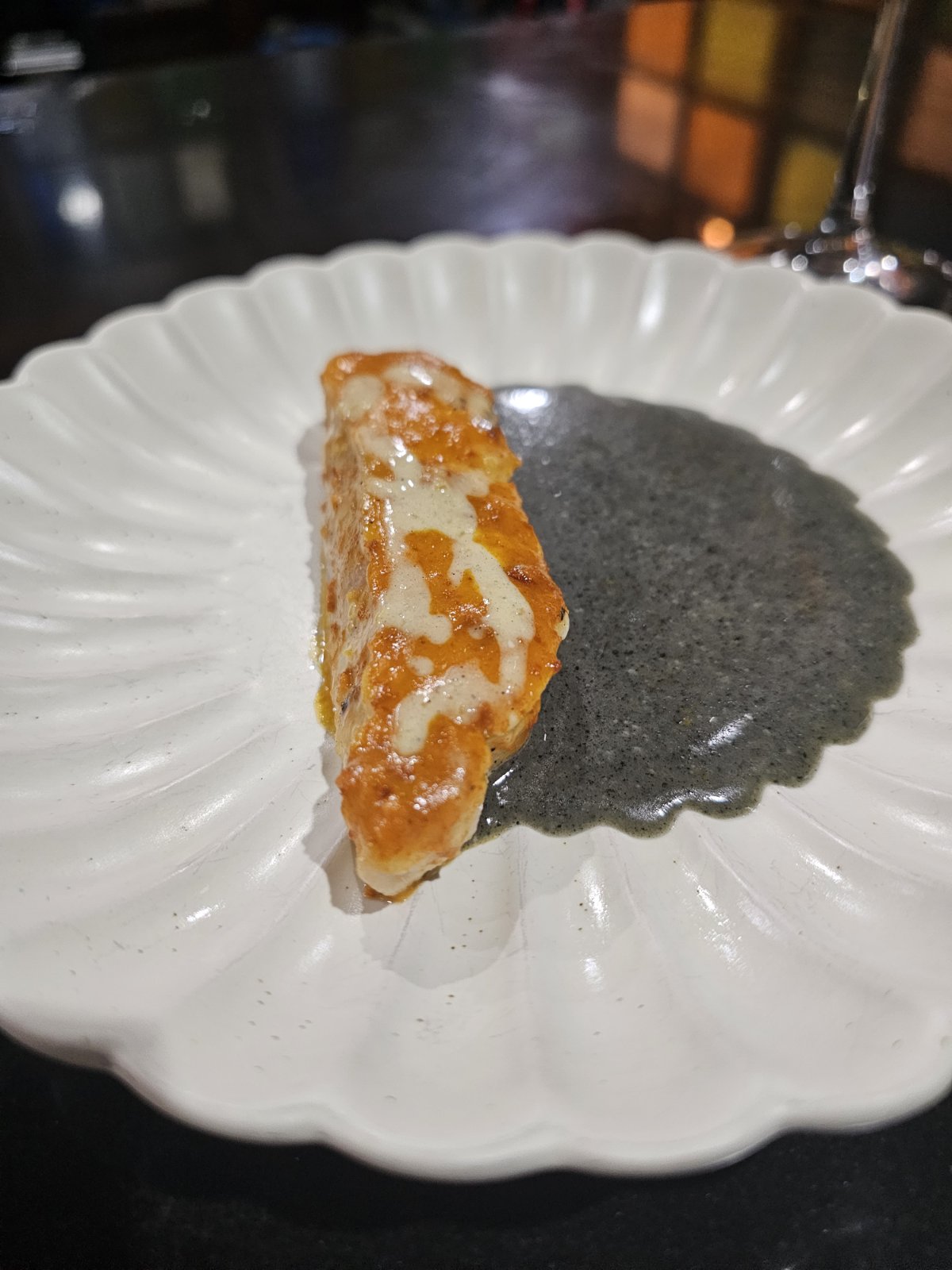
Don, as always, wrapped up the experience with more than one dessert. One was a tibok tibok brûlée, typical of the Kapampangan coconut milk pudding, but frozen and topped off with muscovado brûlée, langka fermented for a month, and dried flowers and the other, a homage to the Filipino merienda, was banana cue, featuring arnibal, the ancestor of all bananas we now have, glazed with chocolate and bagoong and with a layer of sunog na latik beneath to give it further nuance.
You can book a table at Linamnam at @linamnam_mnl on Instagram. Linamnam is at 31 Greenvale 2, Parañaque, Metro Manila.